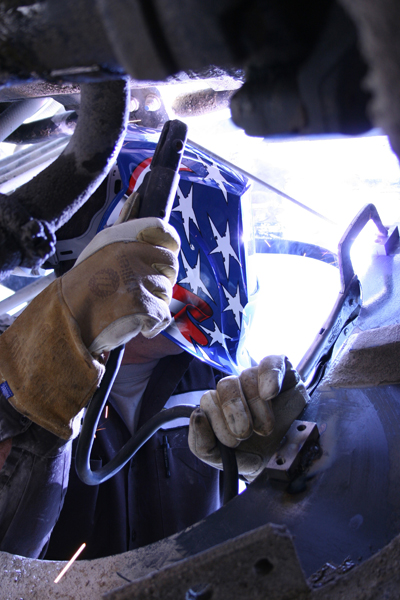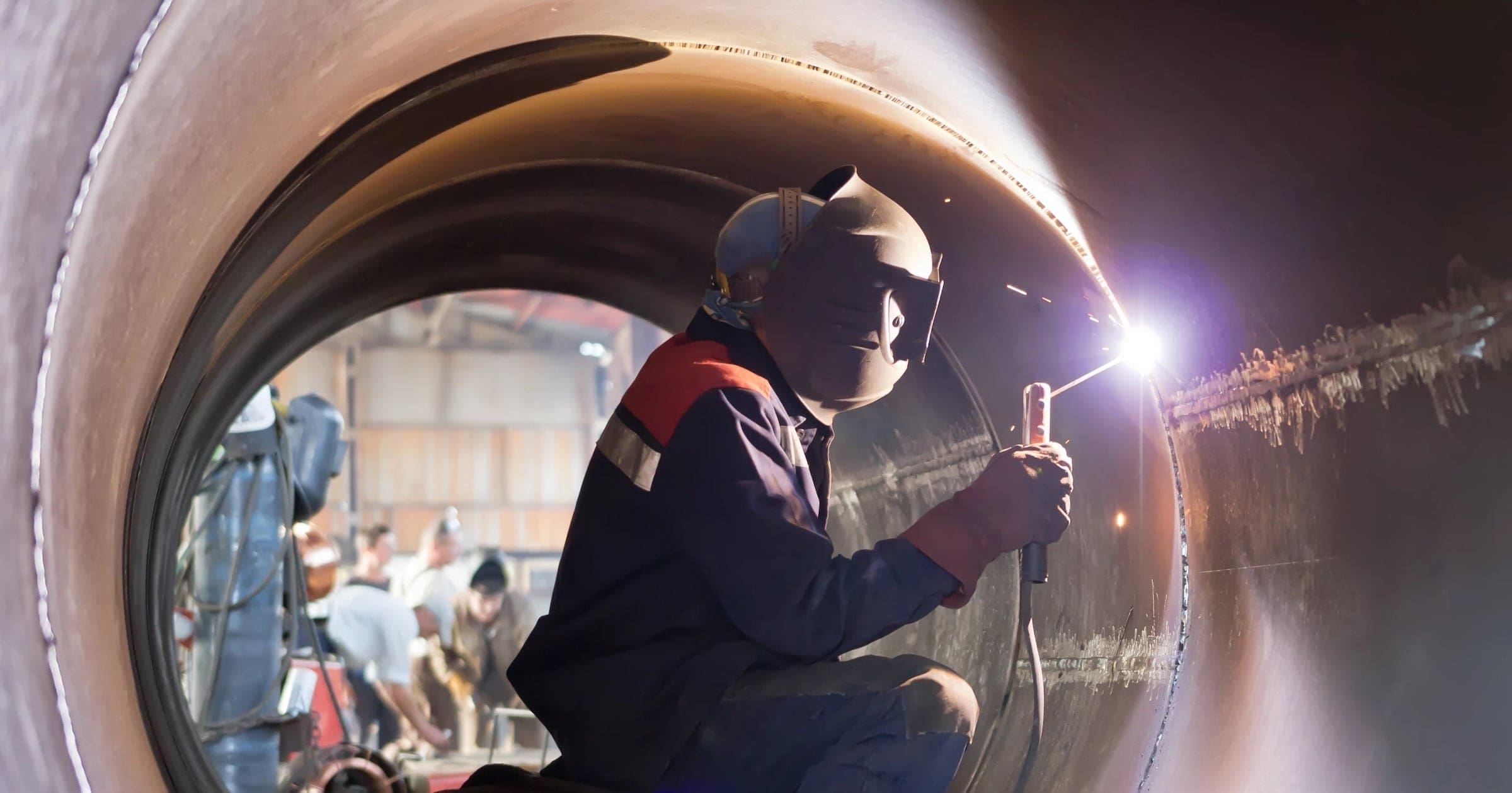Usual Welding Repair Issues and Exactly How to Address Them Efficiently
Welding repair services often come across a variety of issues that can jeopardize the integrity of the end product. Usual issues include inadequate penetration, porosity, and imbalance, among others. Each defect presents distinct challenges that need particular methods for resolution. Comprehending these problems is vital for welders aiming to boost their outcomes and skills. This discussion will discover these typical welding repair service problems and reliable methods to address them.
Inadequate Penetration
Inadequate penetration takes place when the weld steel fails to completely fuse with the base material, leading to weak joints and potential architectural failings. This issue commonly originates from insufficient heat input, inaccurate electrode angle, or inappropriate welding rate. Welders may experience insufficient infiltration as a result of a mistake of the needed criteria for a certain material density or type. In addition, contamination on the base material's surface can hinder effective bonding, worsening the trouble. To deal with insufficient infiltration, welders should ensure ideal setups on their equipment and preserve a clean work surface area. Regular inspection of welds is recommended to identify any type of shortages early, allowing for prompt corrections and the prevention of jeopardized structural stability in bonded settings up.
Porosity
Porosity is a typical issue in welded joints that materializes as little gas bubbles caught within the weld steel. This defect can compromise the stability of the weld, bring about reduced toughness and possible failing under stress. Fabrication. Porosity typically develops from contamination, wetness, or inappropriate welding methods, which allow gases to run away right into the molten weld swimming pool. To attend to porosity, welders ought to guarantee proper surface preparation, maintain a clean workplace, and use suitable welding parameters. Furthermore, choosing the best filler product and shielding gas can minimize gas entrapment. Normal examination and testing of welds can help recognize porosity early, assuring timely corrective activities are taken, therefore preserving the quality and dependability of the welded framework
Misalignment
Imbalance in welding can occur from different elements, consisting of incorrect configuration and thermal expansion. Understanding the origin is vital for efficient resolution. Several improvement methods are readily available to realign elements and ensure architectural stability.
Root causes of Imbalance
Welding imbalance commonly stems from a range of underlying concerns that can jeopardize architectural integrity. One key cause is incorrect fit-up of parts before welding, which can cause spaces and uneven surfaces. Variations in thermal expansion throughout the welding procedure can additionally result in distortion, especially if the products being signed up with have various coefficients of growth. In addition, inadequate securing and fixturing might fail to hold elements firmly in position, bring about movement during welding. Poorly conserved equipment, consisting of welding machines and tools, might present disparities in the weld bead, additional contributing to misalignment. Operator error, stemming from not enough training or experience, can additionally play a significant function in producing misaligned welds.

Improvement Methods Readily Available
Resolving misalignment effectively calls for a combination of restorative techniques tailored to the certain problems at hand. One usual approach is the usage of fixtures or jigs to hold parts in the correct setting during welding, making sure constant positioning. Furthermore, preheating the materials can aid minimize distortion and boost fit-up. For significant imbalance, mechanical adjustment methods, such as making use of hydraulic jacks or clamps, can be utilized to fix the placement before welding. Post-weld warm treatment might also be needed to ease stress and anxieties triggered by imbalance. Mindful examination and modification during the arrangement stage can prevent imbalance issues from ending up being considerable troubles, promoting a smoother welding process and enhancing general structural integrity.
Distortion
Distortion is a typical challenge in welding that can arise from various aspects, including irregular cooling and heating. Recognizing the reasons for distortion is crucial for implementing efficient prevention methods. Resolving this issue not only boosts architectural integrity but additionally boosts the general quality of the weld.
Reasons for Distortion
When subjected to the intense warm of welding, materials often go through modifications that can result in distortion. This sensation mainly arises from thermal growth and tightening throughout the welding process. As the weld location warms up, the material expands; upon air conditioning, it gets, which can create inner stresses. On top of that, uneven heating throughout a work surface can aggravate these stress and anxieties, leading to warping or flexing. The kind of product also plays a significant function; metals with differing thermal conductivity and coefficients of growth might react in a different way, bring about unpredictable distortions. In addition, poor joint layout and poor fixturing can add to misalignment during welding, enhancing the likelihood of distortion. Recognizing these reasons is important for effective welding repair service and avoidance strategies.
Prevention Techniques
Effective avoidance strategies for distortion throughout welding focus on managing heat input and making certain proper joint layout. Keeping a regular heat input aids to minimize thermal expansion and contraction, which can result in distortion. Using methods such as preheating the workpiece can also lower the temperature level slope, advertising uniform home heating. In addition, picking proper joint layouts, such as T-joints or lap joints, can boost security and minimize anxiety concentrations. Implementing appropriate fixturing to secure the workpieces in area further aids in keeping positioning throughout the welding procedure. Ultimately, staggered welding acetylene welding series can distribute warmth more evenly, preventing local distortion. By applying these strategies, welders can greatly lower the chance of distortion and boost the general top quality of their welds.
Cracking
Splitting is an usual concern experienced in welding repair work, often resulting from numerous variables such as inappropriate air conditioning rates, product choice, or insufficient joint prep work. The event of splits can significantly endanger the honesty of the weld, causing potential failings during procedure. To resolve this issue, from this source welders have to initially analyze the origin creates, making certain that materials work and properly selected for the details application. Furthermore, controlling the cooling rate during the welding process is essential; quick cooling can generate stress and cause breaking. Appropriate joint design and prep work also contribute to decreasing the risk. Carrying out these techniques can enhance weld top quality and resilience, eventually reducing the likelihood of breaking in ended up weldments.

Insufficient Fusion
A considerable concern in welding repair work is insufficient fusion, which takes place when the weld steel does not sufficiently bond with the base product or previous weld passes - Welding. This issue can cause weak points in the joint, potentially endangering the honesty of the welded structure. Factors adding to insufficient fusion include not enough warmth input, inappropriate welding method, and contamination of the surface areas being signed up with. To resolve this problem effectively, welders should ensure proper pre-weld cleansing and surface prep work, along with change their welding criteria to achieve appropriate infiltration and fusion. Regular evaluation throughout the welding process can additionally help recognize incomplete fusion early, enabling for timely corrective measures to boost the total high quality of the weld
Overheating
While welding repairs can enhance architectural integrity, overheating presents a significant challenge that can cause product degradation. Too much heat during welding can modify the mechanical residential properties read review of steels, causing decreased strength, enhanced brittleness, and warping. This phenomenon is especially crucial in high-stress applications where structural integrity is extremely important. Recognizing overheating can entail aesthetic assessments for discoloration or distortion, along with keeping an eye on temperature during the welding process. To minimize the risks related to getting too hot, welders need to use appropriate strategies, such as managing warmth input, changing travel speed, and using appropriate filler materials. In addition, applying pre- and post-weld heat treatments can help bring back material buildings and improve the total top quality of the fixing, guaranteeing lasting performance and security.
Frequently Asked Questions
What Are the Usual Signs of a Welding Flaw?

Exactly How Can I Examine My Welds for High quality?
To check welds for top quality, one can utilize visual evaluations, ultrasonic testing, and radiographic methods. Each technique assures architectural honesty, identifies defects, and verifies adherence to defined criteria, ultimately enhancing the dependability of the welded joints.
What Safety and security Precautions Should I Take While Welding?
When welding, one should focus on safety by using suitable personal protective devices, ensuring appropriate ventilation, securing flammable products away, keeping a tidy work space, and knowing surroundings to stop injuries and crashes.
Can I Fix a Weld Without Renovating the Entire Joint?
Repairing a weld without renovating the entire joint is possible, relying on the damages (Montana Mobile Welding and Repair Belgrade Fabrication). Techniques such as grinding, including filler product, or making use of a welding procedure can successfully address specific imperfections while preserving the bordering structure
What Equipment Are Vital for Reliable Welding Repair Works?
Vital devices for efficient welding repair services include a welding machine, cable brush, grinder, protective gear, clamps, and filler materials. Each tool plays a crucial duty in making certain high quality and security during the repair service process. Porosity typically occurs from contamination, moisture, or incorrect welding strategies, which permit gases to leave right into the molten weld swimming pool. Improperly maintained devices, consisting of welding machines and tools, may present incongruities in the weld grain, further adding to imbalance. When subjected to the extreme heat of welding, products frequently undergo adjustments that can lead to distortion. Cracking is a typical concern come across in welding repair work, commonly resulting from various variables such as improper cooling rates, material choice, or inadequate joint prep work. A significant issue in welding fixings is incomplete combination, which happens when the weld metal does not properly bond with the base product or previous weld passes.